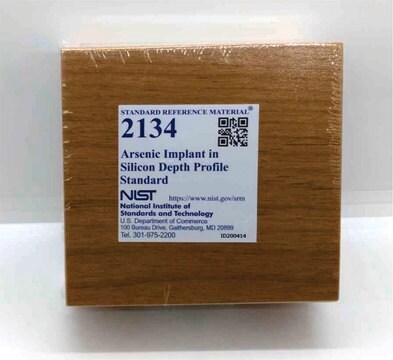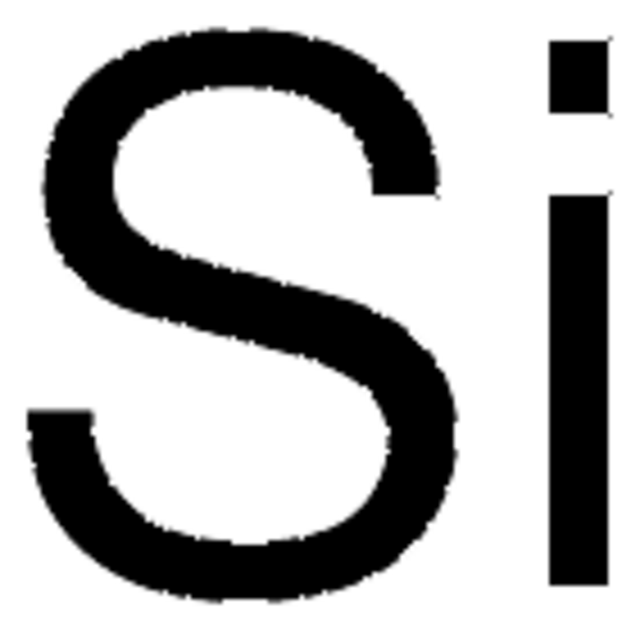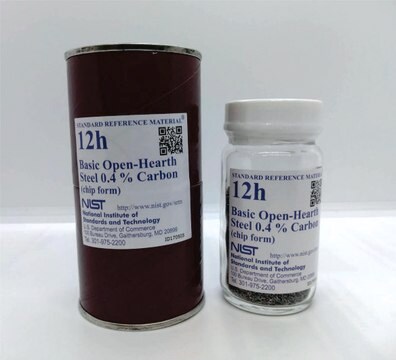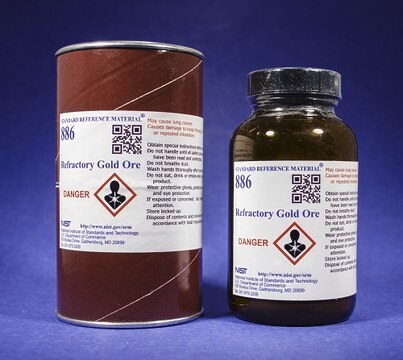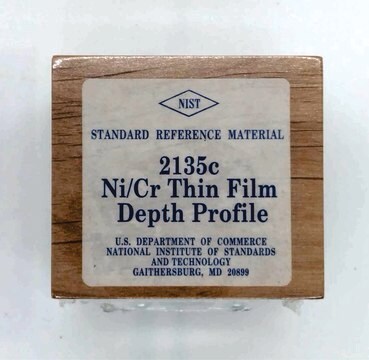NIST2133
Phosphorimplantat in Silizium-Tiefenprofil Standard
NIST® SRM® 2133
Anmeldenzur Ansicht organisationsspezifischer und vertraglich vereinbarter Preise
Alle Fotos(1)
About This Item
UNSPSC-Code:
41116107
NACRES:
NA.24
Empfohlene Produkte
Qualität
certified reference material
Qualitätsniveau
Verpackung
pkg of each
Hersteller/Markenname
NIST®
Anwendung(en)
semiconductor
Format
matrix material
Allgemeine Beschreibung
This Standard Reference Material (SRM) is intended for use in calibrating secondary ion response to minor and trace levels of phosphorus in a silicon matrix by the analytical technique of secondary ion mass spectrometry (SIMS). SRM 2133 is intended for calibrating the response of a SIMS instrument for phosphorus in a silicon matrix under a specific set of instrumental conditions. It may also be used by a laboratory as a transfer standard for the calibration of working standards of phosphorus in silicon. This SRM consists of a 1 cm × 1 cm single crystal silicon substrate that has been ion-implanted with the isotope 31P at a nominal energy of 100 keV. For more information, please refer to the COA and SDS.
SRM 2133_cert
SRM 2133_SDS
SRM 2133_cert
SRM 2133_SDS
Sonstige Hinweise
Example analytes are listed below as a reference. Please download a current certificate at nist.gov/SRM for current analytes and certified values.
Phosphorus (31P)
Phosphorus (31P)
Rechtliche Hinweise
NIST is a registered trademark of National Institute of Standards and Technology
SRM is a registered trademark of National Institute of Standards and Technology
Lagerklassenschlüssel
13 - Non Combustible Solids
WGK
WGK 3
Flammpunkt (°F)
Not applicable
Flammpunkt (°C)
Not applicable
Hier finden Sie alle aktuellen Versionen:
Analysenzertifikate (COA)
Lot/Batch Number
Leider sind derzeit keine COAs für dieses Produkt online verfügbar.
Wenn Sie Hilfe benötigen, wenden Sie sich bitte an Kundensupport
Besitzen Sie dieses Produkt bereits?
In der Dokumentenbibliothek finden Sie die Dokumentation zu den Produkten, die Sie kürzlich erworben haben.
Unser Team von Wissenschaftlern verfügt über Erfahrung in allen Forschungsbereichen einschließlich Life Science, Materialwissenschaften, chemischer Synthese, Chromatographie, Analytik und vielen mehr..
Setzen Sie sich mit dem technischen Dienst in Verbindung.